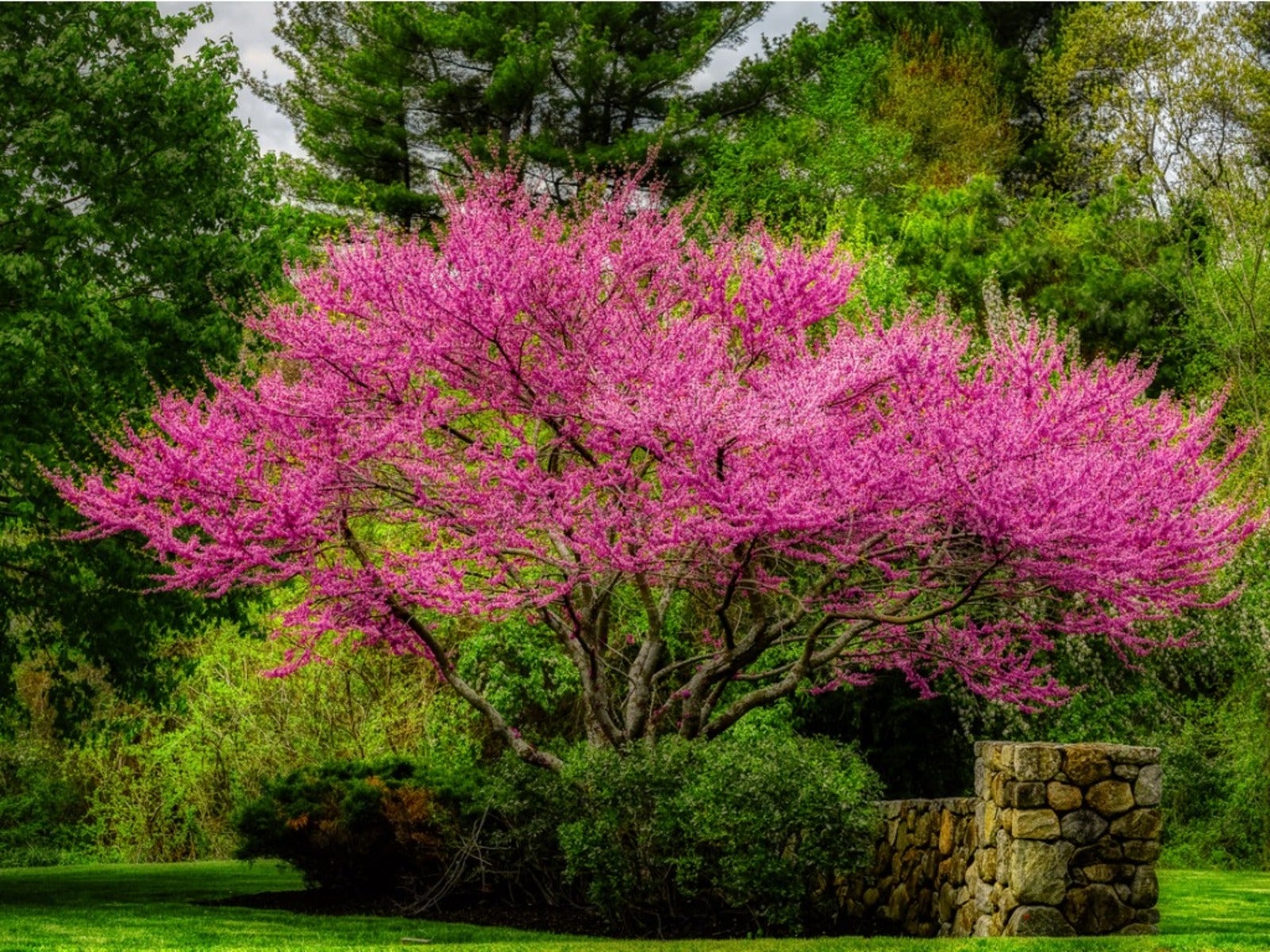Native Redbud Tree Varieties And Cultivars For Every Garden


Eastern redbud is a popular landscaping tree for many reasons. It grows in a variety of conditions. It doesn't grow too large. It's a native species in many states. But, most importantly for many homeowners, redbuds produce a stunning display of early spring flowers. The popularity of the tree has led to the development of many eastern redbud cultivars with varied colors and forms.
About the Native Eastern Redbud
Eastern redbud (Cercis canadensis) is a small flowering tree native to most of the eastern U.S. and part of Mexico. It is one of two North American species of redbud, the other being western redbud. Eastern redbud grows to 20 to 30 feet (6 to 9 m) tall and has a broad crown. Leaves are about four inches (10 cm) long and heart shaped. The flowers are usually pink but can also be lavender or white. The seeds develop in flat pods.
There are two additional varieties of eastern redbud that vary a little bit from the typical specimen. Some experts feel they should be separate species:
- var. Mexicana -- The Mexican variety of redbud is shorter than canadensis. It is also shrubbier and has rounder leaves.
- var. Texensis --The Texas variety is a more compact tree with glossy leaves that are about half the size of those of canadensis.
Redbuds are a good size even for small yards. They like well-drained soil but are not too picky and will tolerate drought. This makes them easy to grow, but the flowers are the main draw. Resembling pea flowers, they bloom thickly in spring, developing directly on stems and even on the trunk.
Varieties of Redbud Trees
As a popular landscaping choice, it's no surprise there are many cultivars. Eastern redbud varieties play with tree form, flower color, and foliage color:
Forest Pansy
This cultivar has striking, deep reddish-purple leaves. They fade to green during the summer. The hotter the weather, the faster the color fades. Flowers are a pinkish-purple.
Merlot Merlot
Another variety with deep red leaves. The flowers are a pinkish lavender color.
Gardening tips, videos, info and more delivered right to your inbox!
Sign up for the Gardening Know How newsletter today and receive a free copy of our e-book "How to Grow Delicious Tomatoes".
Hearts of Gold
Hearts of Gold has yellow leaves. Like Forest Pansy, the unique leaf coloring changes to green, more so during hot weather. You can extend the color a little with regular watering or afternoon shade.
Rising Sun
This is a smaller variety, growing to about 12 feet (3.7 m) tall, so it works for tighter spaces. The leaves are a golden orange color that changes to yellow and then green. There can be some overlap as the leaves change color, providing an interesting contrast.
Carolina Sweetheart
Developed at North Carolina State University, this variety has truly unique leaves. They emerge pink before becoming variegated in purple, white, green, and hot pink. Eventually, the leaves all turn green in summer.
Silver Cloud
This variety has white and green variegated leaves. It does not flower as prolifically as other types. It needs some afternoon shade to maintain the variegation longer into the summer.
Appalachian Red
The flowers provide a major show on Appalachian Red. They are deeply saturated, much more so than on the standard variety. The color is closer to hot pink or magenta than red, though.
Royal White
For bright white flowers against green leaves, try this cultivar.
Flame
Flame produces double blooms in a deep rose color.
Ruby Falls
Ruby Falls offers both a unique color and a special form. One of a handful of weeping redbuds, this one has purple-red leaves.
Lavender Twist
Another weeping cultivar, Lavender Twist has green leaves and pinkish purple flowers. It grows vigorously and quickly and can completely arch over.
Other Redbud Varieties
In addition to cultivars that play with form and color, you can find varieties with greater cold hardiness. Columbus and Northland Strain are two examples and are suitable for areas on the edge of or outside the normal hardiness range of 4 to 9.
The native redbud tree is a classic and popular landscaping tree. Now, gardeners can choose from among more varieties than ever.

Mary Ellen Ellis has been gardening for over 20 years. With degrees in Chemistry and Biology, Mary Ellen's specialties are flowers, native plants, and herbs.
-
 Looking For Plants To Give You The Soft And Fuzzies? Try These 5 Fuzzy Leaf Plant Options
Looking For Plants To Give You The Soft And Fuzzies? Try These 5 Fuzzy Leaf Plant OptionsLovers of texture, drama, silver foliage and tactile plants will adore these special sensory garden additions. These fuzzy leaf plant options will leave you all aglow
By Susan Albert
-
 Get Ready For A Summer Of Hummers! Grow These Full Sun Hummingbird Plants and Flowers
Get Ready For A Summer Of Hummers! Grow These Full Sun Hummingbird Plants and FlowersIf you’re lucky enough to enjoy a sunny backyard, make sure you are maxing out on your pollinator opportunities and grow these full sun hummingbird plants and flowers
By Tonya Barnett